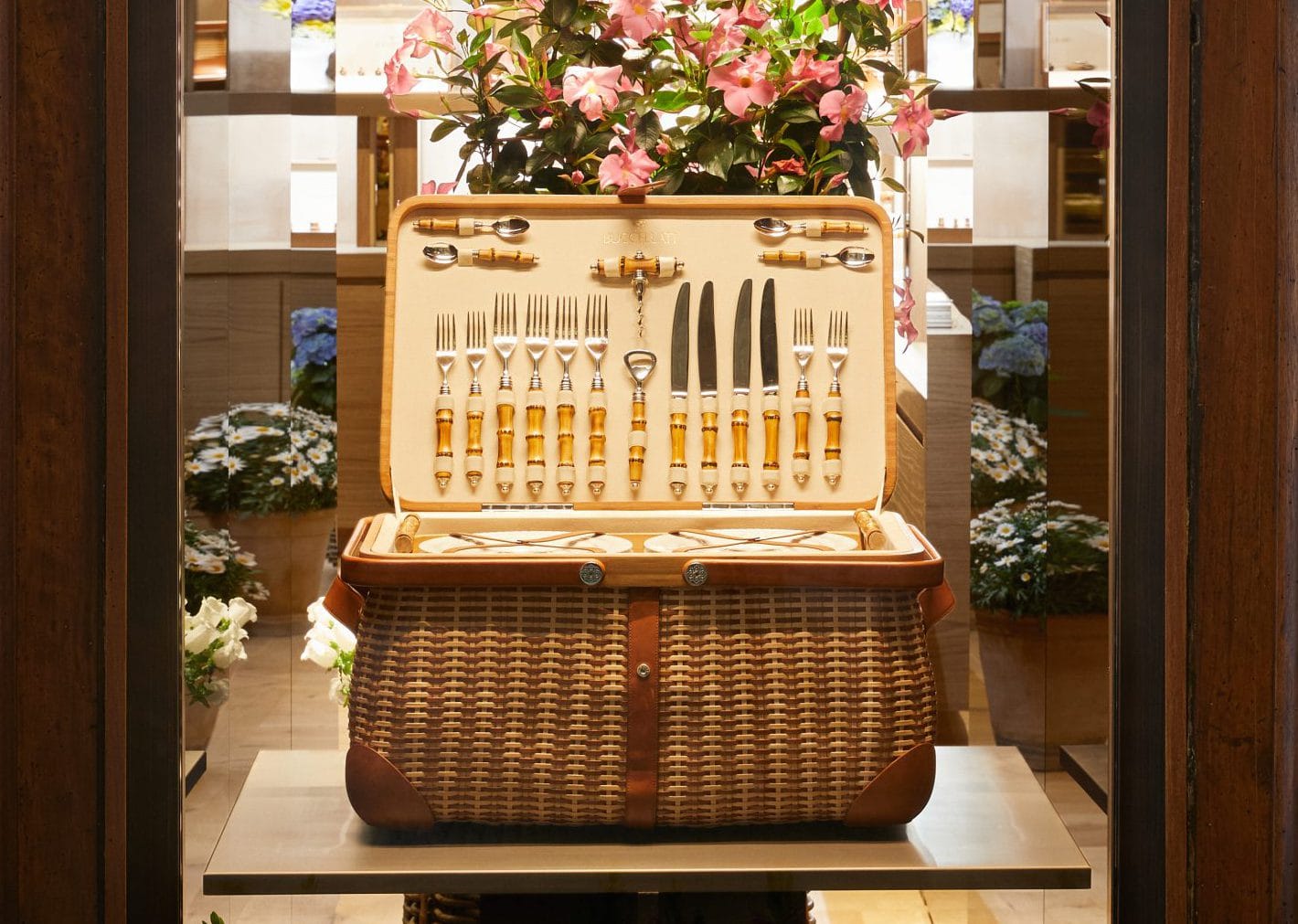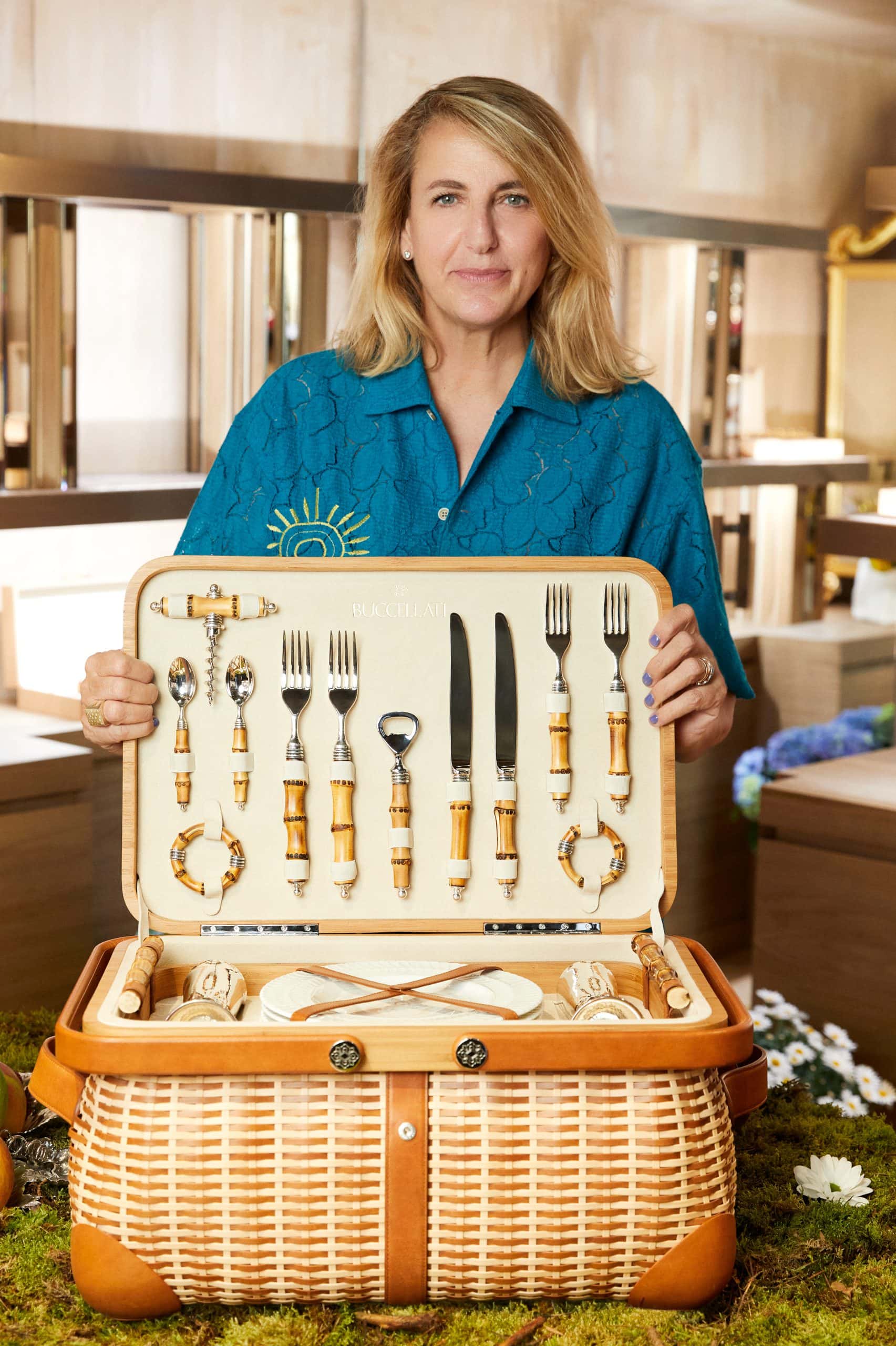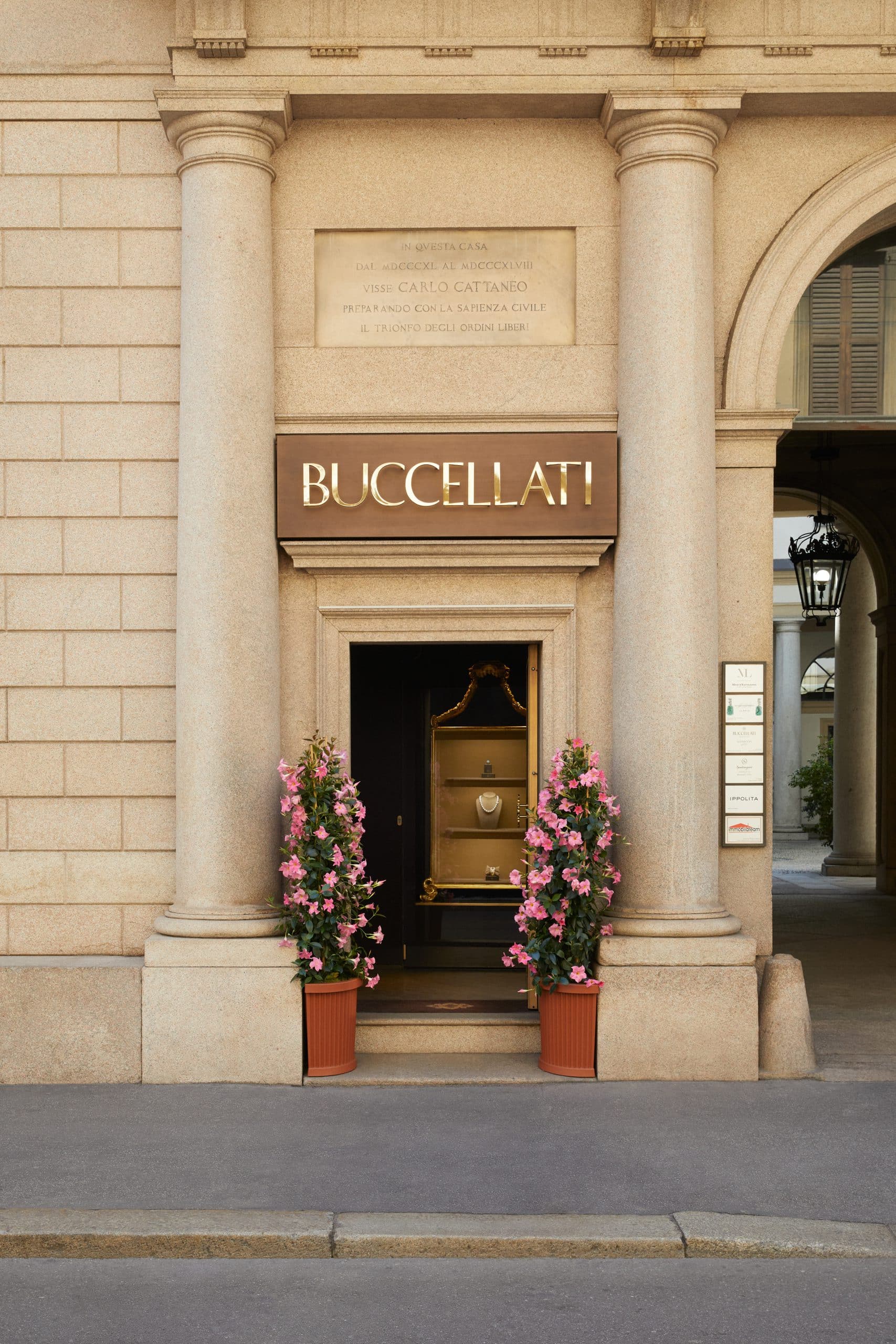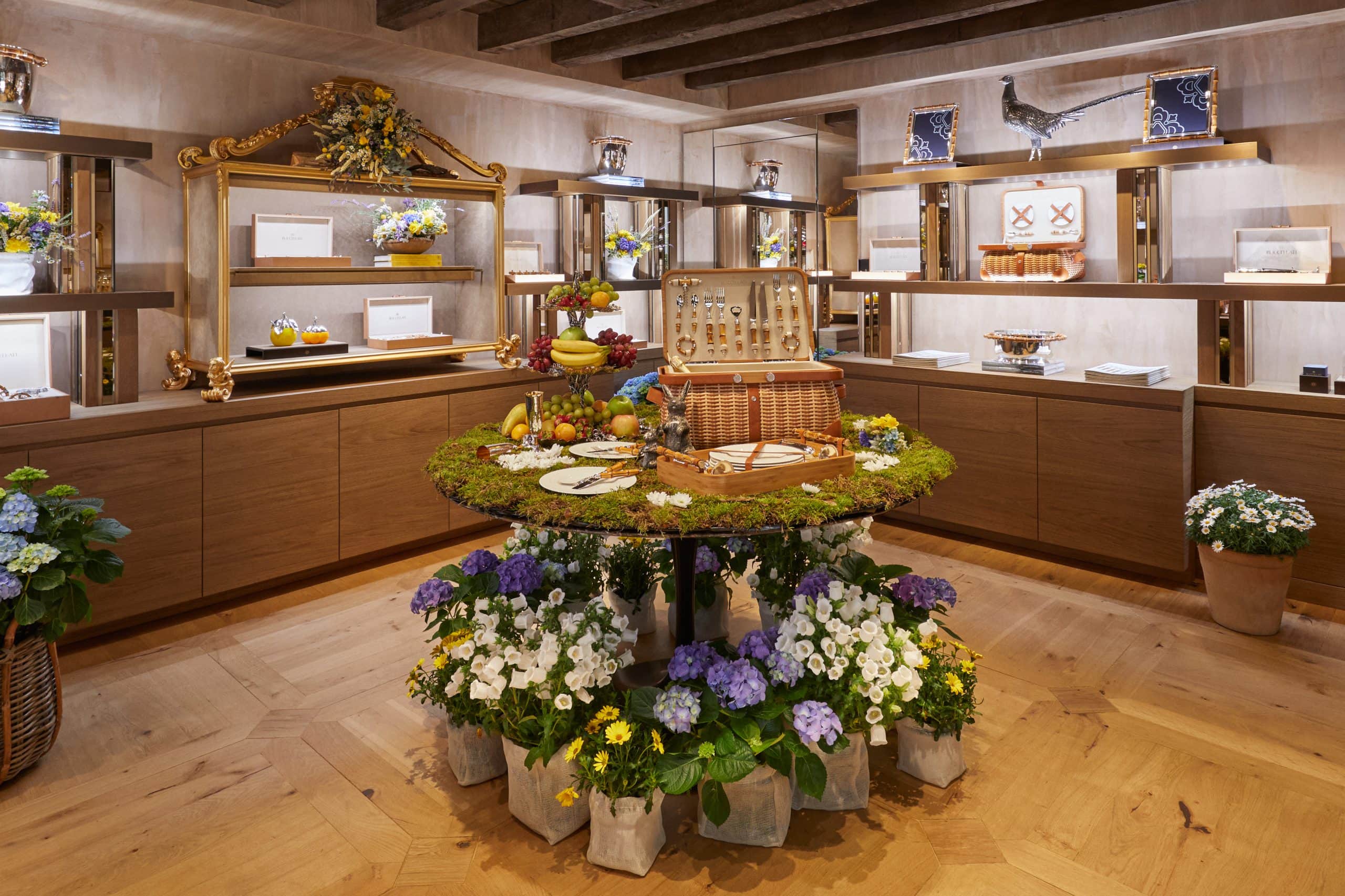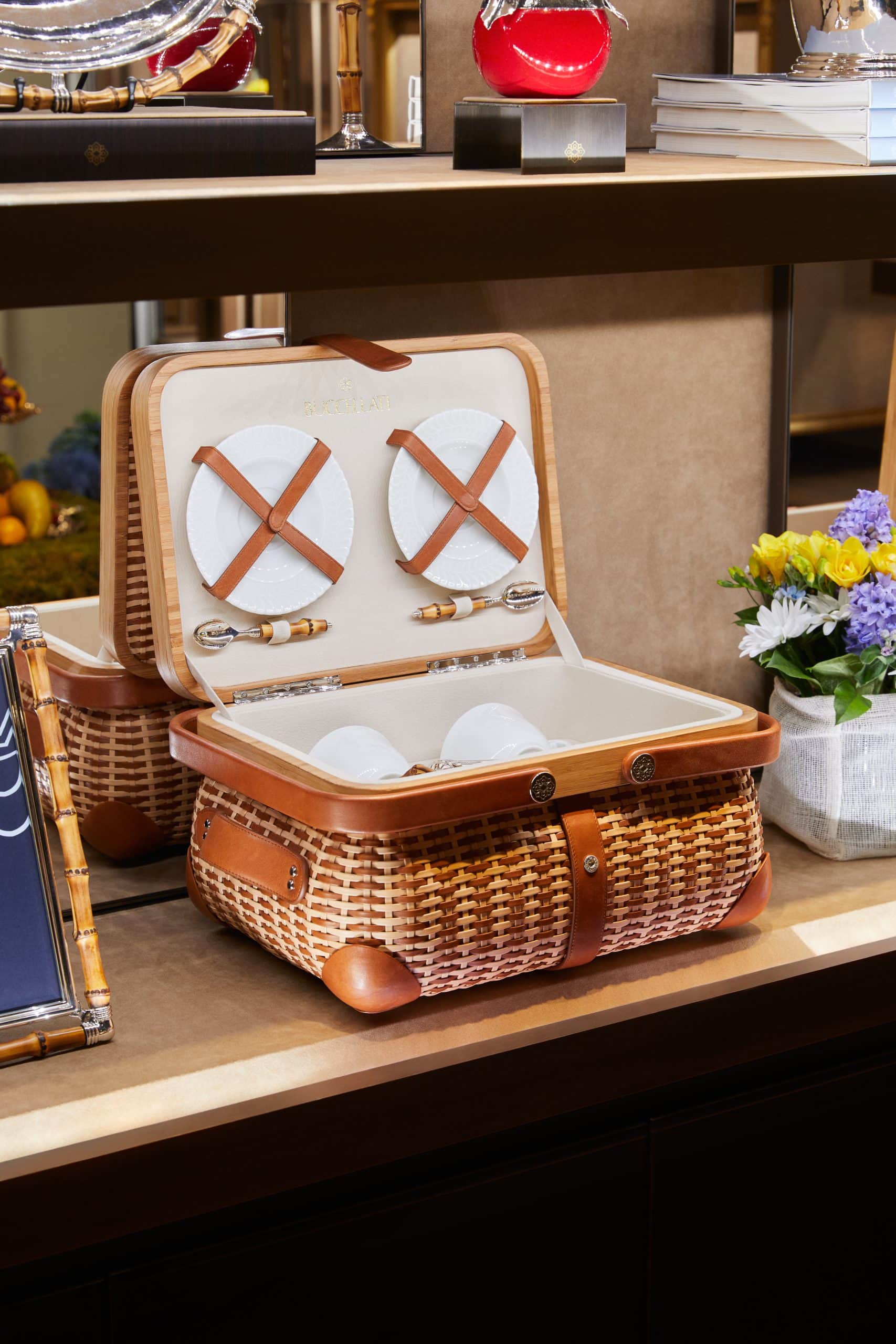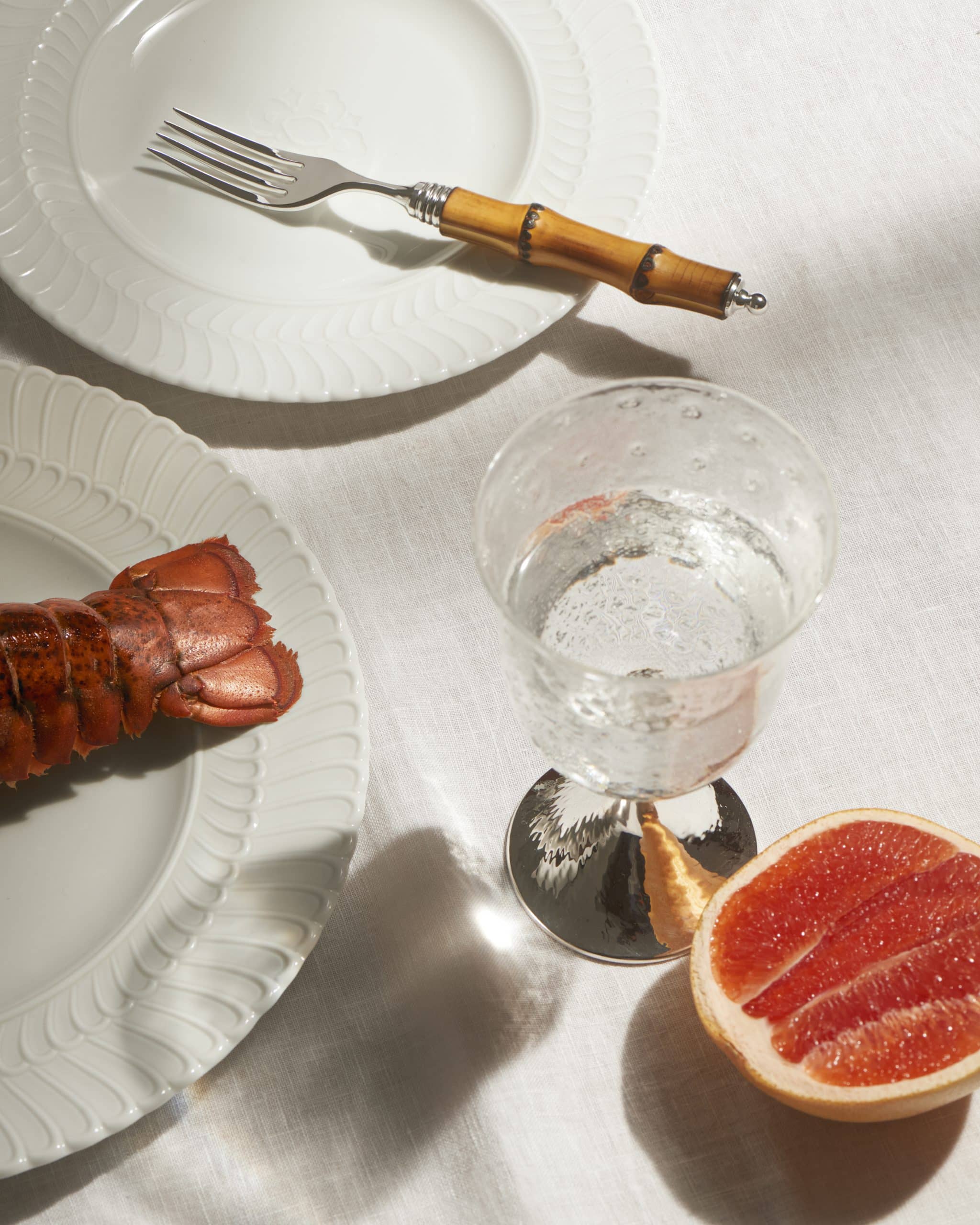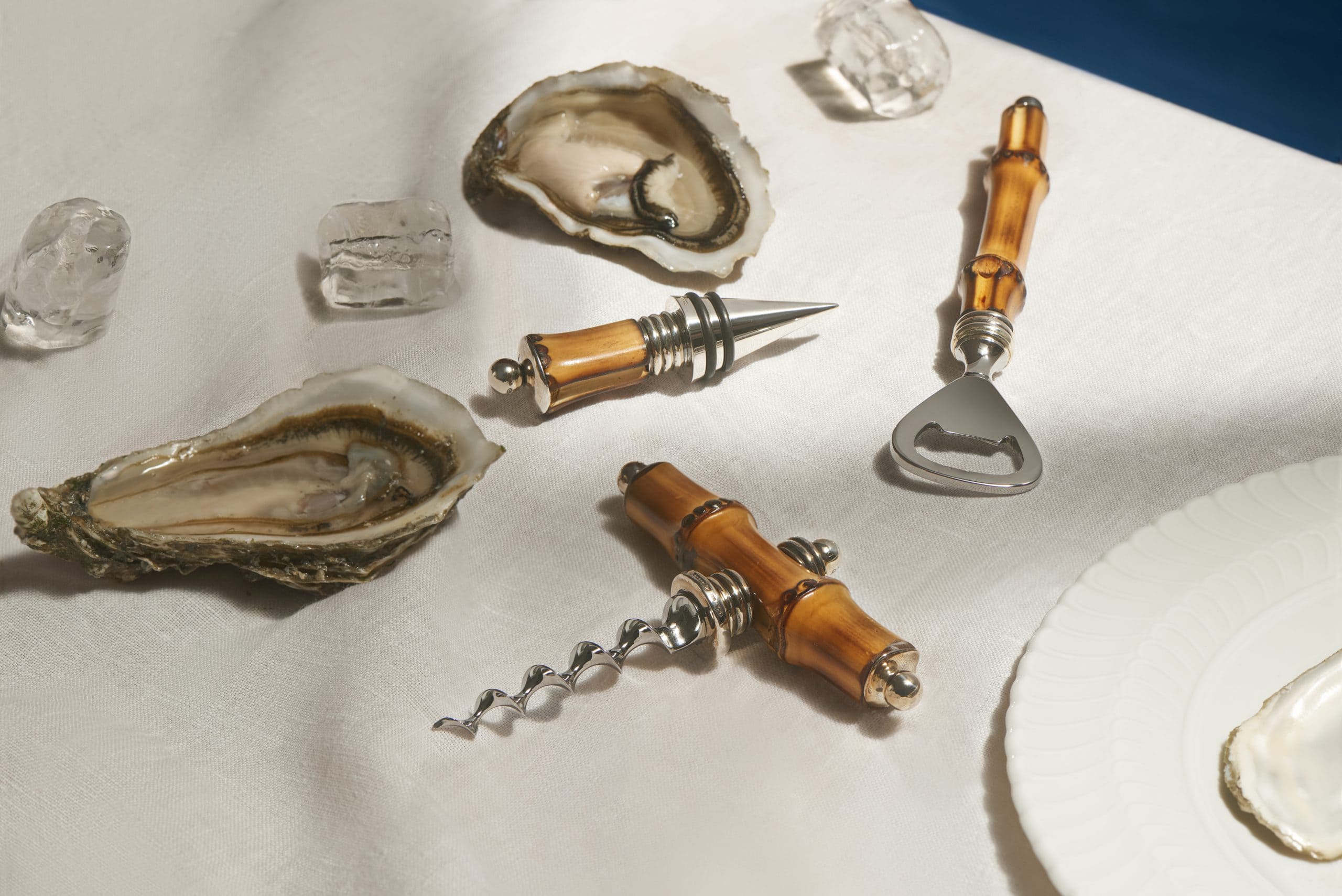Imagine motor driving to the lakes. Milan is too warm, house prices are rising and you want to escape. You want water, but you don’t want to get wet. You want to run into insects but you don’t want them to run into you. You crave sun and nature, but you also want comfort and leather. You want to have a picnic in between working weeks, but not a traditional one. So imagine fake grass, silver rabbits and Burma bamboo mixed with silver. Imagine the iconic Tahiti tableware collection resurrected from the Sixties and reinterpreted by Patricia Urquiola, one of the most energetic, playful and humorous creatives of this century. Imagine Maison Buccellati’s new Tahiti picnic basket in five different versions on the passenger side of that motorcycle or exhibited at Palazzo Gavazzi during Milan Design Week 2024.
Alessia Baranello: Travelling has played an important role in the history of design. The first thing that comes to my mind when I think of travel and design are the works of Ettore Sottsass: he would have never conceived many of his most iconic objects if it wasn’t for his continuous travels all over the world. When doing research for this interview, I also thought about design pieces that were born to be nomadic – like the chairs belonging to the famous collaboration between Vico Magistretti and the Italian brand Campeggi. What comes to your mind when you think about travel and design?
Patricia Urquiola: Travelling has always been one of the fundamental tools of my training and professional growth. My first trip was from Oviedo to Madrid. Then the leap to Milan. And then for the world. A journey that still continues.
AB: Do you agree that travelling could be a key element in the history of design?
PU: Traveling for work in the creative sector allows you to get to know the countries you visit from a different point of view, to create lasting and deeper relationships. It’s a great privilege and an indispensable exercise to get in tune with something far from us, in evolution. Creating a two-way communication in which you receive, understand, digest and only then can you propose. I bring home ideas, images, objects, relationships. Feelings that can only be experienced in the moment.
AB: In several of your interviews you said that when you work with companies you look for the materials that they have abandoned, for the projects they have forgotten. I mean, you dig to find the things that have been repressed by time. Was it the same for the Tahiti tableware collection, firstly commercialised in the Sixties? Its tension towards informal conviviality, is something that in your opinion as a society we have forgotten and could be restored through design interventions?
PU: I have a natural passion for craftsmanship, artisanal work, savoir faire, distilled from time, experience, and experimentation, but coupled with the courage to dare. Not to repeat, but to have intuitions. For the Buccellati installation during Salone del Mobile 2022, I started from the theme of etiquette, which I wanted to reinterpret in a playful way, drawing inspiration from outdoor picnics, which each of us can recall as happy moments from childhood or everyday life. Tahiti is an iconic Buccellati collection that also brings the natural world to the table. From bamboo (meeting silver), the idea arose to interpret conviviality in a playful way, immersed in vegetation. Sitting at the table today, with respect to the Sixties, represents a ritual that goes beyond the meal; it’s a moment of distraction, of exchange, of getting to know what we’re eating, of sharing. From here, we reinterpreted the classic picnic basket in a playful way, with references to traditional Asian baskets.
AB: In a lecture at the University of Michigan in 2016 I was struck by a phrase that you said: “Design products are not only tools of living, they are interfaces, they carry something intangible”. What did you mean by ‘interfaces’?
PU: I was referring to the emotional function of an object. I think the emotional function is what gives an object its magic, when it is able to establish an emotional relationship with the user. This is the hardest function to achieve as a designer, but it can exist in even the most essential or minimal object. Today, the capabilities of invention, realization, and design have multiplied exponentially, and the possibility of turning an idea into a prototype and then developing it is increasingly simpler thanks to new technologies. But it takes consistency. For a design project to really work and be valid, it must answer precise questions: are we sure that the chosen material is the right one? Are we using it to show virtuosity or because it truly corresponds to new research?
AB: And what kind of ‘interface’ does the Tahiti picnic basket make up at this point?
PU: All projects have a soul: be it essential, poetic, functional, or playful, as in the case of the Tahiti picnic basket.
